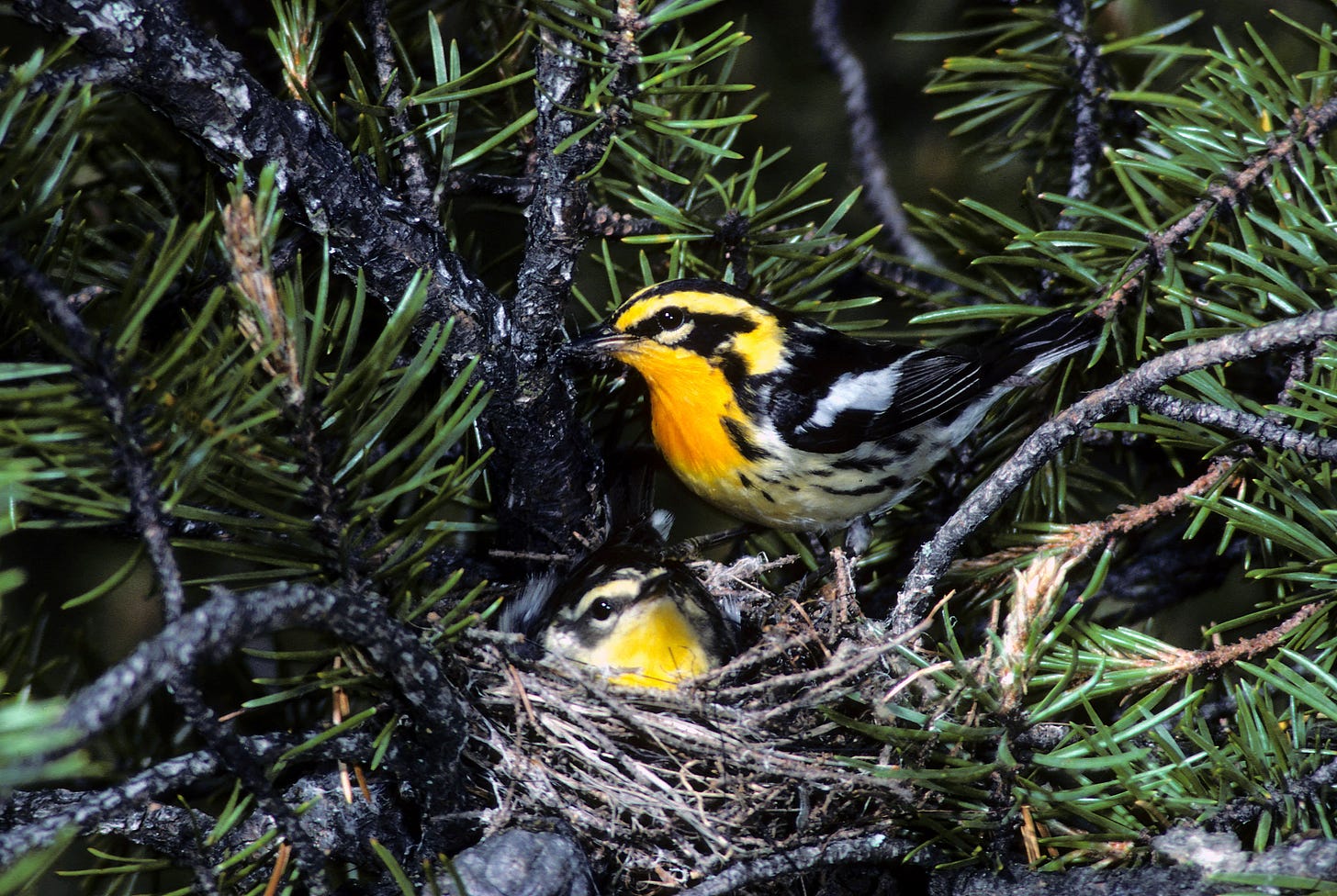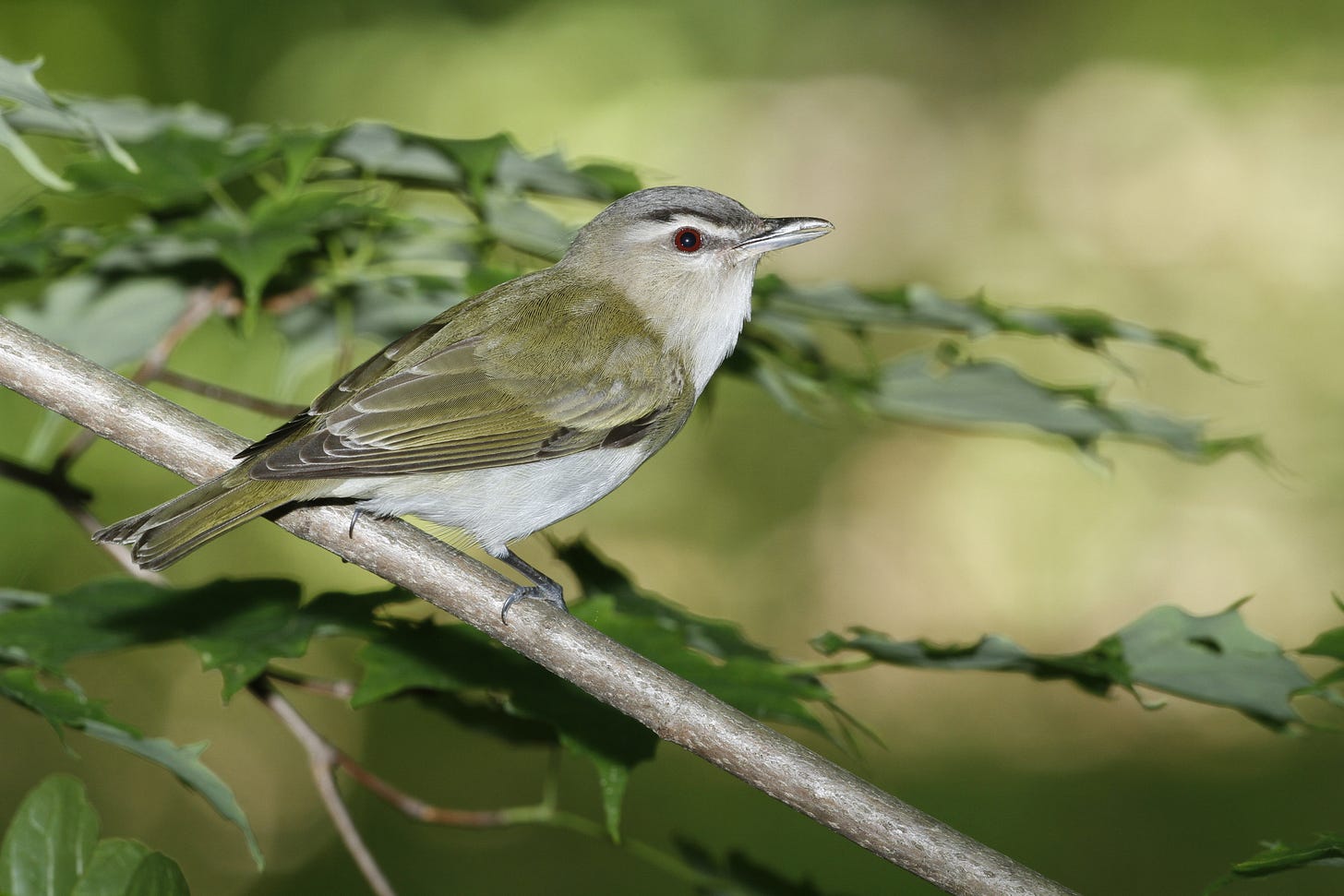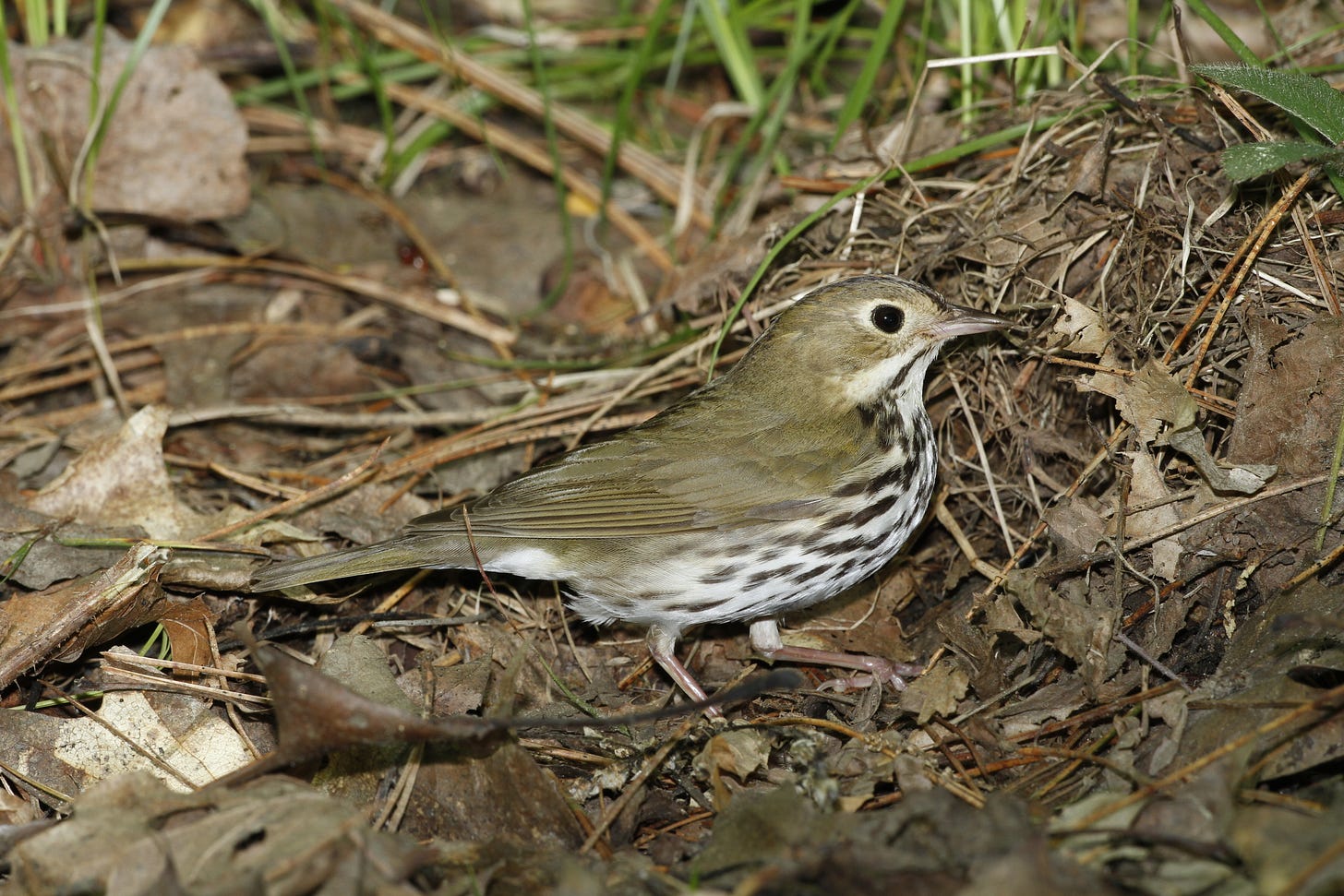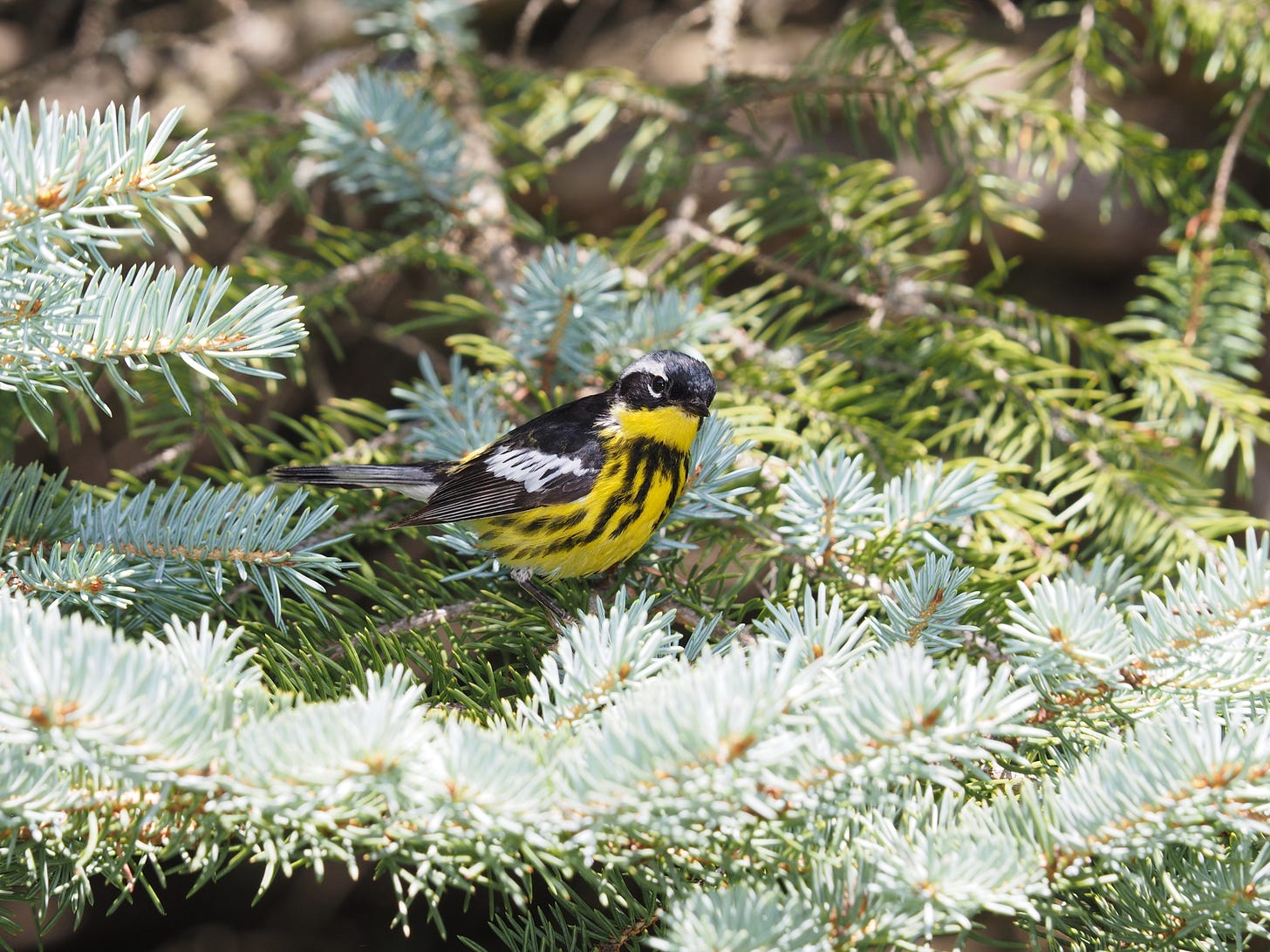You expect to encounter insects in June, especially hungry ones that require a drop of blood to make babies. It’s a fact of life in the woods. They were here first, long before tasty, hairless humans came along, so they own the place, right? And serve a worthy ecological role, fiercely protecting northlands from invasion. It was a wise, wry Canadian, one of my favourite nature writers, Dorothy Maclean, who pointed that out and taught me to appreciate a mosquito’s good side.
But out of the car at the crack of dawn in cottage country, without bug dope? It was horrifying to open the trunk and not find the small box of bottles and sprays I’d so carefully packed the day before. Where was it?? The hungry hordes weren’t waiting for an invitation, the boldest already stabbing at our ears and foreheads, ignoring all attempts to wave them away. I instantly went to Plan B, bug nets on the back seat, and wrestled my way into mine while stoic Dennis started what we’d come for: counting every bird we heard. I frantically pulled on gloves, grabbed the clipboard and began scribbling down what he told me, his quiet voice punctuated by rhythmic thumps and slaps.
We were doing five-minute point counts for the Ontario Breeding Bird Atlas, collecting data on all birds in a 10 km square, targeting a sampling of habitats marked on a computer-generated map. Great fun for a birder, except for the dive-bombing bugs. To my relief, when we finished that first count I found the box of insect repellant on the car floor behind the driver’s seat. We sprayed each other liberally, grimly trying not to scratch.
That’s another good thing about mosquitos and blackflies: they’re on the menu. Insects provide protein for a lot of songbirds, millions of which fly north to nest every spring, keen to stuff beetles and caterpillars into the gaping mouths of their nestlings. If we didn’t have bugs we likely wouldn’t be out there documenting bird species in such beautiful forested terrain, or watching in wonder as a neon-red sun rose up behind a stand of white pines, accompanied by a symphony of birdsong. So I should be grateful for that whining in my ears.
We managed to squeeze nineteen point counts in before the 10:00 a.m. deadline, when song starts to decline for many species. Possibly the last point counts we would ever do, Dennis commented when we’d finished. What? I glanced at him in surprise. But he was right. This is the last of five years’ coverage for this current atlas, and by the time the next one starts, twenty years on, we might not be here. I started counting on my fingers to see how old I’d be, and grimaced.
We’d taken part in the first two Ontario atlases, and loved every minute. Especially canoe trips on remote northern rivers, free fly-ins on float planes that dropped the two of us off in areas we could never afford to access on our own, and then picked us up again downstream. The Berens, the Sachigo, the Roseberry, the Kabinakagami. We paddled upstream on the Bloodvein River through Woodland Caribou Provincial Park, pushed by tailwinds from the Prairies. I’d hoped against hope that we’d luck out for another fly-in canoe trip this third atlas, but aches, pains and mobility issues kept that from happening.
So a morning doing point counts by car in lake country, even with cottages around, was the next best thing. The few times we came to a boat launch I fantasized about climbing into a canoe and paddling out across the water…never to return? Not without listening for every singing bird along the shoreline for a week or three, far from the noise of trucks and other traffic.
The following day was even better, taking on another 10 km square that hadn’t had much atlas coverage, so needed birders to spend time in it, though point counts had been completed. It was all crown land, a climax forest of hemlock, yellow birch and maple, with a rough logging road winding through it. The only human we met was marking trees for a forestry company and knew where raptors were nesting. He was able to confirm breeding for goshawks, broad-winged hawks and pileated woodpeckers.
Atlasing is very much an audial activity. With trees leafed out you can’t see many birds, but hear them constantly. Growing up in the woods as a child, Dennis learned to bird by ear, recognizing every song, warble and chip note. He still does, and with good hearing aids can detect all but the highest, faintest lisps and whispers, such as Blackburnian warblers, cedar waxwings and brown creepers produce. Though it’s not 100 per cent accurate, the miraculous technology of the Merlin app points out a few birds he sometimes misses, and I’ve mastered the basics of this free cell phone device. We had a delightful day driving uphill and down, windows open, and stopping whenever we heard a song we didn’t instantly recognize. As well as 51 songbirds, we found 11 painted turtles sunning on logs in a pond, and a female snapper laying eggs beside the road.
Another useful thing about cell phones… We were on our way back out to the highway when we discovered with some dismay that a sizable red oak had fallen across the road since we’d come in, blocking our way. Dennis always keeps a hand saw in his trunk, but hadn’t transferred it to the vehicle he’d acquired this winter. CAA wouldn’t touch the situation, though the agent looked up a township phone number for me when I begged him to. The Algonquin Highlands clerk who answered assured us a team would rescue us shortly, then phoned back half an hour later reporting they had come as far as the municipal dump, then turned back, not required to clear roads out there in the boonies.
More pleading on my part encouraged her to revisit the crew, who came at last with a chain saw, actually glad for the break from washing trucks on such a fine sunny day. We all enjoyed watching a feisty baby water snake curled up on the roadside. And as Dennis and I drove on out of the woods, liberated at last, I couldn’t help feeling a tiny bit sorry that we were.













Great article, as always. Thanks for braving the mosquitoes.